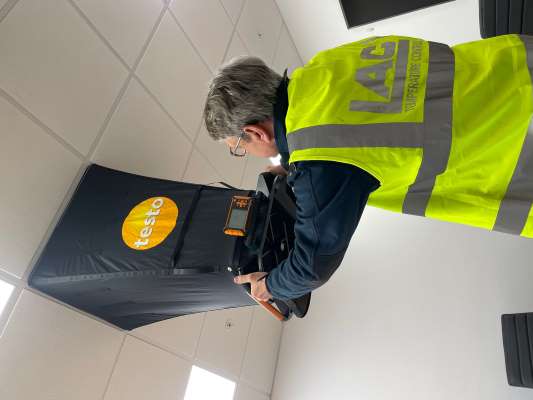HVAC systems do a lot of heavy lifting in a commercial setting. By regulating temperature, humidity and air quality, they help to create a healthy indoor environment and ensure the comfort of anyone working in or visiting the premises.
But there’s more to the process than simply having the right equipment installed. Proper air balancing is also key to maximising the effectiveness of a commercial HVAC system.
Simply put, HVAC air balancing is the process of adjusting and fine-tuning various components within the system to ensure that it operates at its best.
Most commercial HVAC systems rely on a network of ducts to deliver heated or cooled air to different areas of the building. What air balancing does is ensure the airflow through this ductwork is evenly distributed, providing consistent temperatures and air quality in every space.
It's important not only for comfort levels but also for optimising energy efficiency, reducing operational costs, and prolonging the lifespan of HVAC equipment.
All systems should be balanced when first installed as part of the HVAC commissioning process. However, wear and tear can affect the balance over time, as can changes in the building's configuration.
Common signs that your system might need rebalancing include:

Balancing a commercial HVAC system is a complex process that requires technical expertise and specialised tools. HVAC professionals follow a systematic procedure as below to ensure that the airflow is correctly distributed and balanced.
The first step in the balancing process is to review the building's ductwork system. This may involve studying schematics or blueprints if available.
If not, technicians will need to identify the components of the HVAC system and calculate the air output and total airflow.
Before balancing the system, technicians will thoroughly inspect the HVAC system to identify any issues that may affect its performance.
Loose dampers, disconnected components, or damaged ducts can all contribute to an imbalanced system. Repairs are done to ensure optimal functionality.
Once the repairs are complete, the technician will turn on the HVAC system and measure temperature and pressure at various points.
This data helps identify any discrepancies between the actual airflow and the predicted airflow.
To measure the airflow entering and exiting each room, technicians use a tool called a balancing hood. This tool allows them to read the airflow at the registers and compare it to the desired airflow.
If the airflow measurements deviate from the desired levels, technicians will adjust dampers and fans to correct the imbalance. For example, if a room receives too much airflow, the damper can be closed to redirect the air to other areas.
This process continues until the supply and return measurements are within the acceptable range, at which point the system is considered balanced.
The frequency of HVAC system balancing depends on various factors, including the size and complexity of the system, the type of building, occupancy patterns, and environmental conditions.
While there’s no one-size-fits-all answer, here are some general guidelines to consider:
Initial balancing: HVAC systems should undergo initial balancing shortly after installation or major renovation. This ensures that the system is properly configured and optimised for the specific requirements of the building.
Seasonal adjustments: some HVAC systems may require adjustments seasonally to account for changes in weather conditions. For example, the system may need to be rebalanced as the weather transitions from heating to cooling or vice versa.
Changes in building use: if there are significant changes in building use, such as renovations, expansions, or changes in occupancy patterns, the HVAC system may need to be rebalanced to accommodate them.
It’s important to monitor the performance of the HVAC system regularly and be alert to any signs of imbalance, such as uneven temperature distribution, excessive energy consumption, or occupant complaints. If issues arise, the system may need to be rebalanced more frequently.
Planned preventative maintenance is also key. As part of this, HVAC technicians will inspect and test the system to identify any issues or inefficiencies that may require balancing.
Working with qualified HVAC professionals who can assess the system and provide recommendations based on industry best practices is key to maintaining a properly balanced and efficient HVAC system.
At Loughborough Air Conditioning, we provide comprehensive HVAC air balancing services to businesses across the East Midlands.
Our qualified engineers are equipped with the latest tools and techniques to assess your system thoroughly and identify any issues affecting its performance. Whether your building requires initial balancing after installation or ongoing maintenance to ensure optimal efficiency, we offer tailored solutions to meet your needs.
